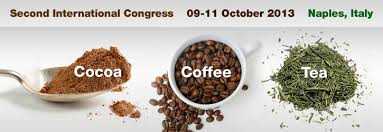Share your coffee stories with us by writing to info@comunicaffe.com.
Martins V.M.R.1,2, Francisco V.3,4, Cruz, M.T.3, Batista, M.T.4, Coimbra M.A.2 1 CIMO, Escola Superior Agrária de Bragança, Bragança, Portugal. 2 QOPNA, Departamento de Química, Universidade de Aveiro, Aveiro, Portugal. 3 CNC, Faculdade de Farmácia, Universidade de Coimbra, Coimbra, Portugal. 4 Centro de Estudos Farmacêuticos, Faculdade de Farmácia, Universidade de Coimbra, Coimbra, Portugal.
In Trás-os-Montes region (Portugal), the small shrub (Pterospartum tridentatum), the narrow-leafed ash (Fraxinus angustifolia), and the apple mint (Mentha suaveolens) are vegetable species frequently used in the preparation of infusions for medicinal purposes. According to the popular tradition, the infusions prepared from P. tridentatum, F. angustifolia and M. suaveolens protect against diabetes, hypertension, high levels of cholesterol and uric acid [1]. Infusions from the flowers of P. tridentatum, leaves of F. angustifolia, and aerial parts of M. suaveolens were prepared and the high molecular weight material obtained was fractionated by ethanol precipitation. Sugar and glycosidic linkage analysis suggested the presence of pectic polysaccharides comprising distinct proportions of rhamnogalacturonan and homogalacturonan domains. Preliminary results suggested that the isolated pectic polysaccharides could modulate the inflammatory process.
Pectic polysaccharides are known not only as the main structural components of plant cell walls but also as exhibiting anti-inflammatory activity [2], which can be extremely valuable in the treatment of numerous clinical disorders with a strong inflammatory component, such as diabetes and hypertension, among others. Several studies suggested that the linear region, mainly composed by galacturonic acid residues, played a significant contribution in the anti-inflammatory activity displayed [2, 3].
Anti-inflammatory assays are being conducted in order to establish a structure-activity relationship for the polysaccharides isolated from P. tridentatum, F. angustifolia and M. suaveolens infusions. References
[1] Carvalho, A. M. P. (2005) Ethnobotany from Montesinho Natural Park. Plants, tradition and popular knowledge of the northeastern territory of Portugal. . PhD Thesis-Universidad Autónoma de Madrid (Original version in Spanish). [2] Popov, S. V et al. Antiinflammatory activity of the pectic polysaccharide from Comarum palustre. Fitoterapia 2005, 76, 281-287.
[3] Markov, P.A. et al. Anti-inflammatory activity of pectins and their galacturonan backbone,” Russ. J. Bioorg. Chem. 2011, 37, 817-821.

















